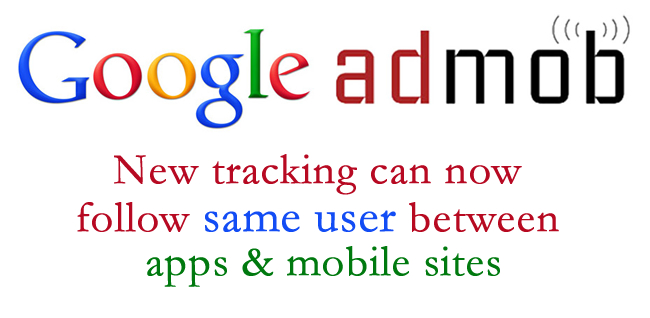 Reports state that Google is ready to begin testing a new type of tracking that will enable users to be tracked between apps and pages as one user. Right now, the same user who utilizes both apps and regular mobile are considered two different people for tracking purposes. This obviously creates a gap for advertisers who want the ability to know what the same user is doing between apps and the web, as well as to target those people as a single user rather than as two distinct ones.
Reports state that Google is ready to begin testing a new type of tracking that will enable users to be tracked between apps and pages as one user. Right now, the same user who utilizes both apps and regular mobile are considered two different people for tracking purposes. This obviously creates a gap for advertisers who want the ability to know what the same user is doing between apps and the web, as well as to target those people as a single user rather than as two distinct ones.
There are currently several larger advertisers who are testing out Google’s new technology. Tracking is done through both Google’s third party sites network as well as through Google’s own app tracking with AdMob. A cookie that is dropped on a user on the mobile web is then tracked and connected to that same user’s app version of a cookie. Once connected together, advertisers can target ads in apps based on websites they have visited as well as target ads on the mobile web based on their app use.
Google has confirmed they are making this change.
A Google spokesman confirmed the effort. “As an alternative to less transparent methods, we’re doing some tests to help businesses run consistent ad campaigns across a device’s mobile browser and mobile apps, using existing anonymous identifiers, while enabling people to use the established privacy controls on Android and iOS,” the spokesman said in an email.
It has been known that Google was looking into an alternative to the cookie, which is the traditional way of tracking users as they travel to different sites, however this new ad tracking is not considered a cookie alternative.
There is also speculation that this push by Google is to stave off Facebook’s encroachment into the mobile ad arena, an area that Google has dominated for years. Facebook is coming on strong as the second largest with 22% of the market share – up from a mere 5% two years ago – a share Google doesn’t want to lose.
The cookie’s mobile limitations has opened the door to companies like Facebook and Twitter, which are able to anchor people’s identities to registered user accounts and connect them across sites and apps. Both companies could use that ability to more accurately target people across mobile web, mobile apps and even desktop web. Facebook and Twitter already target people with ads on the social networks based on the third-party sites — and in Facebook’s case, apps — they visit. But the companies have also begun selling ads on other publishers’ mobile properties. That’s Google’s turf.
The change is welcomed by AdWords advertisers. “Treating mobile browser and mobile app users differently has created a disconnect for advertisers,” says The SEM Post columnist Lisa Raehsler of Big Click Co. “Now Google’s ability to deliver more relevant ads and messaging based on both types, and combined usage, will open greater targeting possibilities. This will help meet the needs of advertisers that have been looking for ways to improve mobile ad performance. Hopefully they will offer reporting that segments the two audiences– that would be icing on the cake!”
According to AdAge, Google plans to begin testing the new tracking technology this fall with a private beta involving automated ad-buying companies.
Jennifer Slegg
Latest posts by Jennifer Slegg (see all)
- 2022 Update for Google Quality Rater Guidelines – Big YMYL Updates - August 1, 2022
- Google Quality Rater Guidelines: The Low Quality 2021 Update - October 19, 2021
- Rethinking Affiliate Sites With Google’s Product Review Update - April 23, 2021
- New Google Quality Rater Guidelines, Update Adds Emphasis on Needs Met - October 16, 2020
- Google Updates Experiment Statistics for Quality Raters - October 6, 2020
david rothwell says
Hi Jen,
this is inevitable.
As I mentioned in my comment on your local ads post, Google is integrating as much as possible to be able to follow users through their journey to the final sale, whatever the device or location.
Cookies don’t follow users across devices, and this isn’t likely to change.
So the growing importance of mobiles (and mobile pages) to advertising (think lower mobile CPC’s at the moment) and sales forces this requirement on Google, so they can help sales attribution and increase the value of mobile CPC’s over time.
The desktop equivalent is Chrome, which already does synchronise across devices, assisting the attribution.
G can already show an “estimated” cross-device attribution; as more of these kinds of tracking methods are introduced.
And the more valuable Chrome becomes to the user, and the more useful local advertising, the more accurate this will become, and the value of the mobile CPC will rise.
More on my upcoming book site:
http://www.clickscustomerscashflow.com/ken-mccarthy-mobile-google-gets/